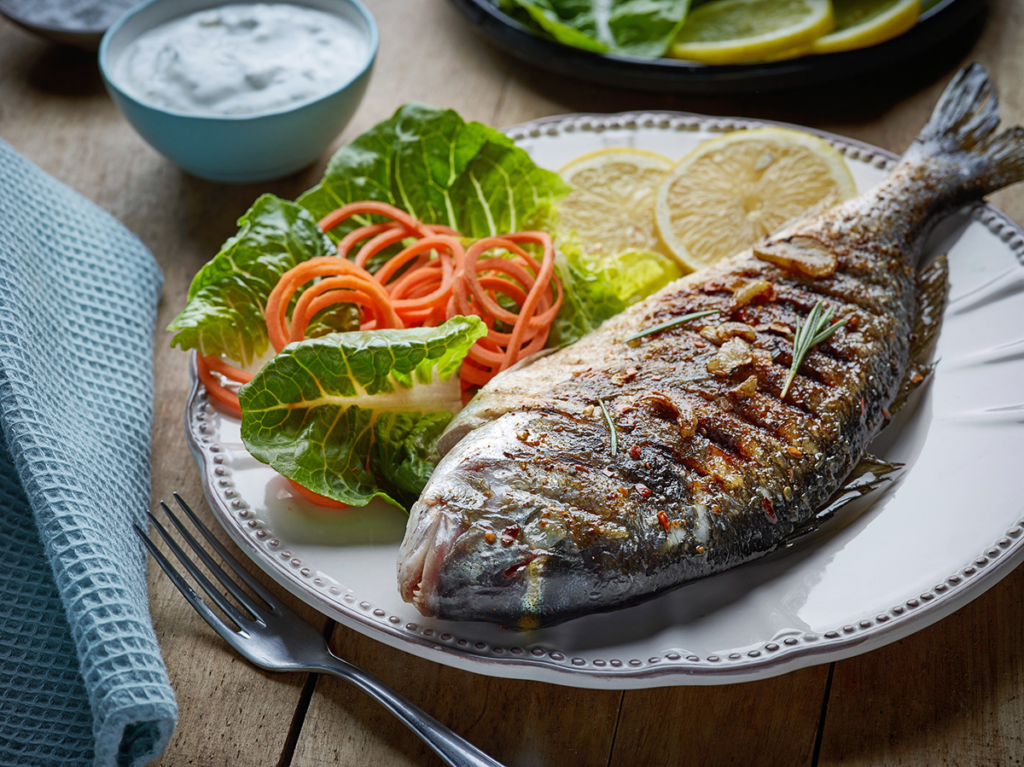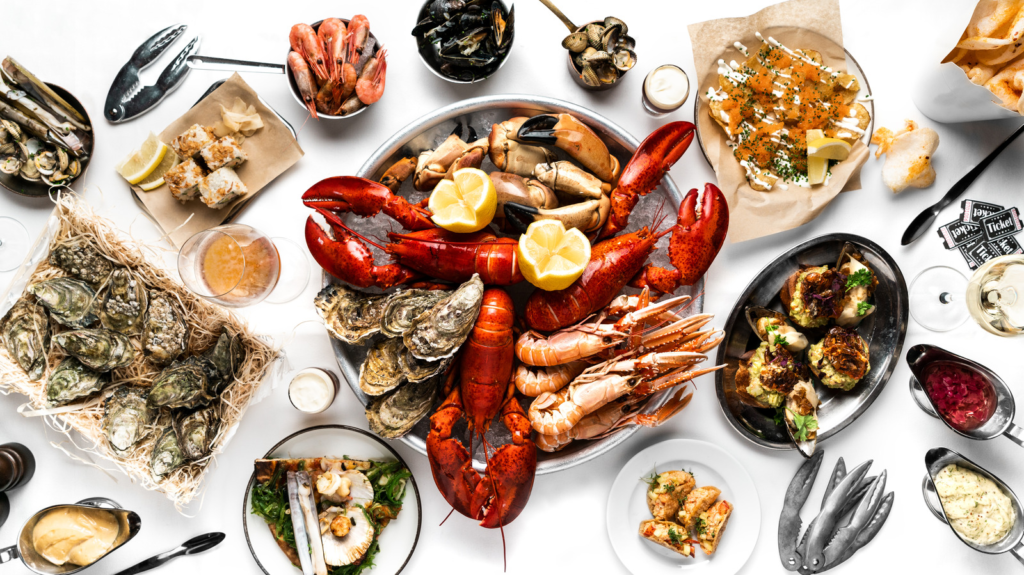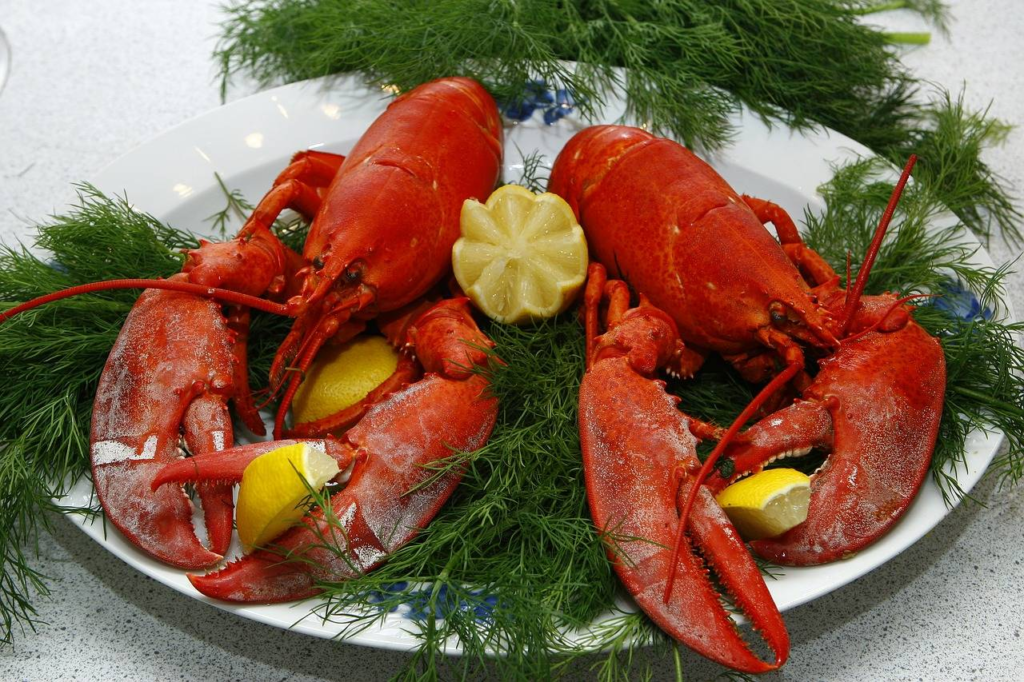Seafood refers to a variety of marine animals and plants that are consumed as food. It includes fish, shellfish, crustaceans, mollusks, and other aquatic creatures. Here are some common types of seafood along with information about their nutritional value, flavor, and texture:
- Fish:

- Salmon: Rich in omega-3 fatty acids, high-quality protein, and vitamin D. It has a mild to rich flavor, depending on the species, and a tender, flaky texture.
- Tuna: A good source of lean protein, omega-3 fatty acids, and various vitamins and minerals. Tuna has a meaty texture and a distinct flavor, ranging from mild to strong, depending on the species.
- Cod: Low in fat and calories, cod provides protein, vitamins, and minerals. It has a mild, delicate flavor and a firm, flaky texture.
- Shellfish:

- Shrimp: Low in calories, shrimp are a good source of protein, omega-3 fatty acids, and various nutrients. They have a sweet, delicate flavor and a firm, slightly crunchy texture.
- Crab: Rich in protein, vitamins, and minerals, crab meat is prized for its sweet, delicate flavor. It has a firm yet tender texture.
- Lobster: Low in fat and calories, lobster offers protein, vitamins, and minerals. It has a sweet, rich flavor and a firm, dense texture.
- Crustaceans:

- Crawfish: A good source of protein, crawfish are low in fat and calories. They have a sweet, slightly nutty flavor and a tender texture.
- Crayfish: Similar to crawfish, crayfish have a sweet, delicate flavor and a tender texture.
- Prawns: Prawns are similar to shrimp, with a similar nutritional profile and flavor. They have a slightly sweeter taste and a firmer texture.
- Mollusks:

- Oysters: Oysters are rich in zinc, iron, and vitamins. They have a briny, mineral-rich flavor and a soft, buttery texture.
- Clams: Clams offer protein, iron, and various nutrients. They have a slightly salty, mild flavor and a chewy texture.
- Mussels: High in protein, mussels are a good source of vitamin B12 and minerals. They have a sweet, briny flavor and a tender, slightly chewy texture.
Each type of seafood has its own unique nutritional profile, flavor, and texture. It’s important to note that nutritional values can vary depending on the species, preparation methods, and cooking techniques used. When consuming seafood, it’s recommended to choose sustainably sourced options and be mindful of any allergies or dietary restrictions.

